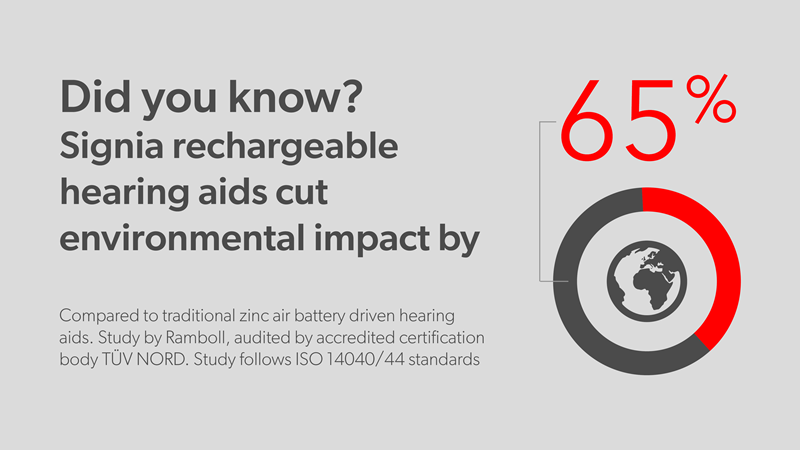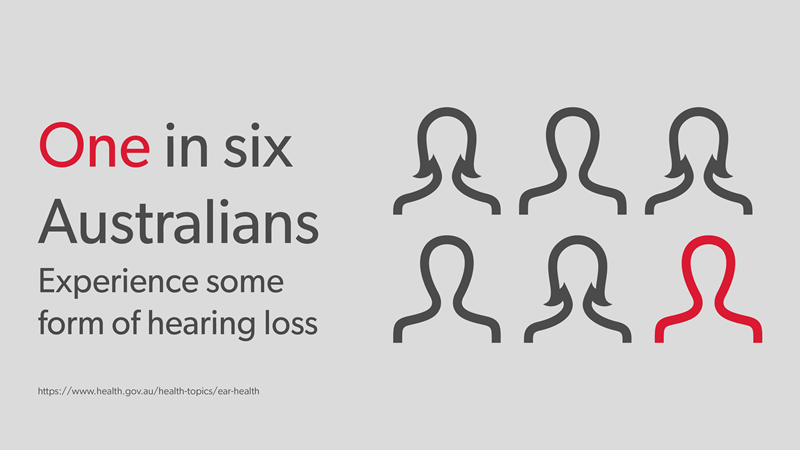
On World Hearing Day, Signia’s Rechargeable Range Brings Hearing Aid Sustainability
Signia’s leading hearing aid range continues to innovate, providing a wide range of sustainable and environmentally friendly solutions to the marketplace through its comprehensive range of rechargeable devices.
Created Updated
Signia has proven that its rechargeable hearing aids have 65 per cent less environmental impact compared to traditional battery-powered systems.
Rechargeable hearing aid users save more than 100 batteries each year, which is particularly significant in Australia, as the country does not have a recycling scheme for these spent cells.
Locally, one in Six Australians are impacted by hearing loss1.
Featuring proven lithium-ion technology, the coverage of the Signia Rechargeable offering entails the full suite of instant fit in-the-ear, behind-the-ear, receiver in canal and custom solutions, available with a wide array of accessories in multiple specifications and at various price points.
The rechargeable technology is convenient for users, with multiple charging options available, while the elimination of battery changes is a significant advantage for people with dexterity issues.

From an environmental standpoint, Signia has proven that its rechargeable hearing aids have 65 per cent less environmental impact compared to traditional battery-powered systems, with key improvements found in areas such as climate change (57 per cent), fossil depletion (52 per cent), human toxicity non-cancer (76 per cent), land use (87 per cent), and marine eco-toxicity (78 per cent), amongst other factors.
In real terms, rechargeable hearing aid users save more than 100 batteries each year, which is particularly significant in Australia, as the country does not have a recycling scheme for these spent cells.
“In Australia, one in six Australians experience some form of hearing loss, and via the Signia Rechargeable range, we bring to the market a sustainable and environmentally friendly solution that is reliable and cost-effective,” said Peter McKinnon, Signia Product Manager. 1

“Late last year, Signia published a study on the environmental benefits of rechargeable hearing aids, the first-ever comprehensive and scientific life cycle assessment of the options. Over 18 different environmental criteria, the advantages of recharging are apparent – it is clearly the way forward for the industry. Outside of the sustainability factors, rechargeable hearing aids are extremely practical and hassle-free, and there are zero compromises in quality or comfort. Signia have developed rechargeable options to cover the entire product range, from entry-level, affordable systems through to high-performance lines. Hearing loss does not need to limit your potential, and we are proud to continue to make a difference in people’s lives.”
For the purpose of the Signia study, total environmental impact throughout the life cycle of the hearing aids included considerations such as raw materials, production, transportation, usage, and disposal, with the battery itself contributing 80 per cent of the environmental impact of the non-rechargeable option.
Depending on the product, a range of different charging options are available within the rechargeable range, including pocket-sized charging cases, as well as Qi wireless charging technology, while the Dry&Clean charger also offers UVC cleaning and drying technology to maintain the hearing aids in peak condition.


Leading the Signia Rechargeable range are lines such as the Insio Charge&Go AX, the first custom hearing aids to feature lithium-ion contactless charging, Signia Active, the Signia Motion X, and the CROS AX.
Built on 140 years of industry experience, the Signia line of hearing aids was launched in 2016, with the brand quickly rising to be top-three in the market.